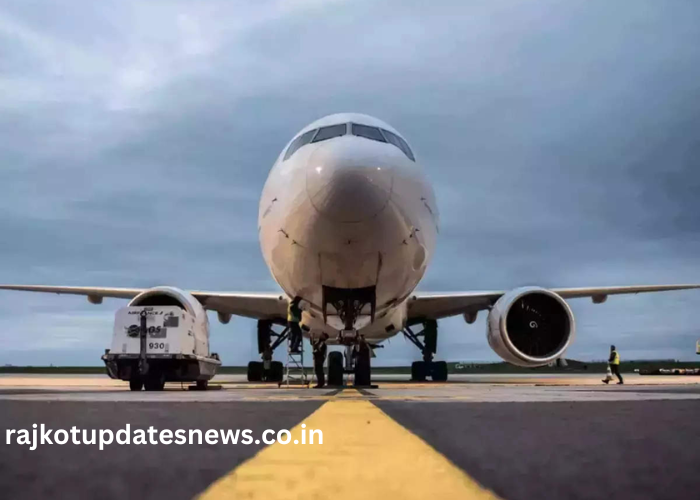
In recent news, a Covid outbreak on a flight from Italy has captured global attention and sparked a series of urgent health measures. This situation underscores the ongoing risks associated with international travel during the pandemic.
Understanding the details of this outbreak, the responses from health authorities, and the actions passengers should take is crucial for maintaining public safety and personal health.
Key Points
- A significant Covid outbreak occurred on a flight from Italy, causing concern.
- Health authorities are actively tracing contacts and enforcing health measures.
- Passengers are urged to monitor their health and adhere to local guidelines.
What Happened on the Flight?
On [specific date], a flight departing from Italy was the epicenter of a Covid outbreak, with several passengers testing positive for the virus either during or shortly after the flight. The incident has led to a wave of concern as authorities scramble to determine the source of the outbreak.
While the exact origin is still under investigation, preliminary reports suggest that the confined environment of the airplane played a significant role in the spread.
How Did the Covid Outbreak Spread?
The spread of Covid on this flight can be attributed to several critical factors:
- Confined Space: Airplanes are enclosed spaces where air circulation is limited, facilitating the rapid transmission of viruses.
- Duration of Exposure: Long flights increase the likelihood of exposure to infected individuals, particularly if passengers are not following safety protocols.
- Limited Social Distancing: The close proximity of passengers in their seats further exacerbates the risk of virus transmission.
What Measures Are Being Taken by Health Authorities?
In response to the outbreak, health authorities have mobilized a comprehensive set of measures to contain the situation:
- Contact Tracing: Authorities are actively tracing and contacting passengers who were on the flight to inform them of potential exposure and advise on next steps.
- Enhanced Testing: Increased testing protocols are being implemented for individuals who were on the flight to identify any further cases and prevent further spread.
- Sanitization: The aircraft involved is undergoing thorough cleaning and disinfection to ensure that any potential residual virus is eliminated.
How Are Airlines Responding to the Situation?
Airlines are taking significant steps to address the concerns raised by the outbreak:
- Air Filtration Systems: Airlines are reviewing and upgrading their air filtration systems to ensure that they are effective in reducing airborne pathogens.
- Mask Mandates: Stricter mask-wearing policies are being enforced for both passengers and crew members to minimize the risk of virus spread.
- Staff Training: Enhanced training is being provided to airline staff on how to manage and respond to potential Covid cases onboard.
What Should Passengers Do if They Were on the Flight?
For passengers who were on the affected flight, the following actions are recommended:
- Monitor Symptoms: Watch for symptoms of Covid, such as fever, cough, or difficulty breathing, and seek medical attention if any symptoms develop.
- Follow Local Guidelines: Adhere to local health guidelines, including self-isolation and testing requirements, to prevent further transmission.
- Report to Authorities: Inform health authorities about any symptoms or exposure to help with contact tracing and management.
What Are the Implications for International Travel?
The outbreak highlights the ongoing risks associated with international travel. The implications include:
- Increased Health Precautions: Travelers may face more stringent health checks and requirements before and after flights.
- Potential Travel Disruptions: Flights and travel plans may be affected by health-related delays or cancellations.
- Enhanced Safety Measures: Travelers need to be more vigilant and adhere to safety measures to protect themselves and others.
How Can We Prevent Future Outbreaks?
Preventing future outbreaks involves a multifaceted approach:
- Strict Hygiene Protocols: Implementing rigorous hygiene and safety measures in airports and on airplanes.
- Health Regulations: Ensuring that airlines and airports comply with the latest health and safety regulations.
- Vaccination: Encouraging widespread vaccination to reduce the severity and spread of Covid.
What Are the Current Guidelines for Travelers?
Travel guidelines are continually updated, but typically include:
- Proof of Vaccination or Testing: Many destinations require proof of Covid vaccination or a negative test result before allowing entry.
- Quarantine Requirements: Some countries mandate quarantine or additional testing upon arrival to manage potential risks.
- Adherence to Local Regulations: Travelers must comply with the specific health regulations of their destination, including mask-wearing and social distancing.
Conclusion
The Covid outbreak on the flight from Italy serves as a stark reminder of the persistent challenges of managing the pandemic.
It emphasizes the importance of vigilance, adherence to health guidelines, and effective communication between travelers, airlines, and health authorities. By staying informed and proactive, we can work together to mitigate the risks and protect public health.
FAQ’s
- What caused the Covid outbreak on the flight from Italy?
The exact cause of the outbreak is under investigation, but factors such as confined spaces and close contact likely contributed.
- What measures are being taken to address the outbreak?
Health authorities are conducting contact tracing, increasing testing, and enhancing cleaning protocols on the aircraft.
- How can passengers protect themselves if they were on the flight?
Passengers should monitor for symptoms, follow local health guidelines, and report any issues to health authorities.
- What changes are airlines making in response to the outbreak?
Airlines are improving air filtration systems, enforcing stricter mask policies, and providing additional staff training.
- How do current guidelines impact international travel?
Guidelines generally include proof of vaccination or a negative Covid test, and compliance with local regulations, which may involve quarantine or additional testing.


